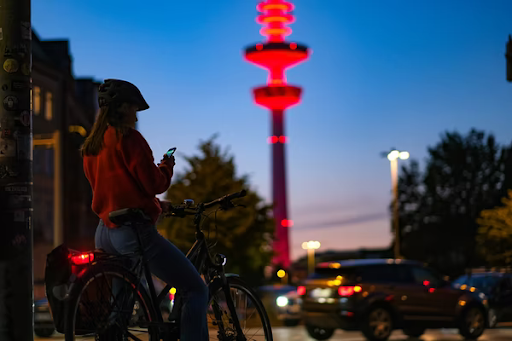Top 8 Safety Tips for Long Road Trips
Road trips can be an exhilarating experience, offering travelers the freedom to explore new places and create lasting memories. However, it’s important to remember that long drives can also present unique challenges. From fatigue to unexpected car trouble and hazardous weather conditions, there are a number of factors that can put road trippers at risk. That’s why it’s essential to be prepared before going on any road trip. By taking the time to plan ahead and pack the right supplies, you can minimize the risks and ensure that your journey is both enjoyable and safe.
1. Vehicle Maintenance and Inspection
Getting your vehicle checked before a trip is essential. By inspecting parts like the engine and tires, you’re making sure everything is working as it should. It’s not just about avoiding breakdowns; it’s also about safety. Faulty brakes or dim lights can be dangerous on the road. And, of course, nobody wants to be stuck in the middle of nowhere because of a preventable car issue. By ensuring your vehicle is maintained, you’re also saving money. Addressing minor issues early on can prevent costly repairs in the future.
2. Plan Your Route in Advance
Planning your route before a trip is a smart move. When you know the roads you’ll be taking, you can be better prepared for what lies ahead. By mapping out your journey, you get to identify important spots like gas stations, restaurants, and emergency facilities. This planning not only saves time but also ensures you’re not stranded in unfamiliar places. Imagine if your car broke down; knowing the nearby services can be a lifesaver. You can call in towing services for help. Additionally, prior planning can help you estimate cost of car tow in case such a mishap happens. This means you’re financially prepared for such emergencies, avoiding surprise expenses.
3. Stay Informed About Weather Conditions
Just as you’d check the traffic, it’s wise to also get updates on the weather conditions of your route. This becomes even more important for longer drives where the terrain varies. For instance, the weather in a mountainous region can be quite different from a coastal area. Being informed helps you prepare for what’s ahead. Harsh conditions such as dense fog, torrential rains, or snow can pose risks while driving. They can affect visibility and road grip.
4. Take Regular Breaks
It’s essential to understand the effects of long drives on our bodies. Driving for hours can tire you out, both mentally and physically. When you’re tired, you don’t react as quickly, which can be dangerous on the road. Every couple of hours, pull over at a safe spot. Use this time to get out of the car, move around, drink some water, and maybe have a snack. This short pause helps refresh your mind and body. It also helps in preventing stiffness from sitting in one position.
5. Keep an Emergency Kit Handy
You hope you’ll never need an emergency kit, but it’s comforting to know it’s there. When on the road, anything can happen. Maybe your car breaks down, or there’s an unexpected weather change. In such situations, certain items become crucial. A first-aid kit can help with small injuries, while a flashlight can be useful if it gets dark. Jumper cables are essential if your car’s battery dies. A blanket can provide warmth in cold conditions. Additionally, having bottled water and some food items can be a lifesaver if you’re stranded for a while.
6. Limit Night Driving
Driving during the night is different from daytime driving. The darkness means you can’t see as far ahead, making it harder to spot obstacles or other vehicles. This limited visibility can be challenging, especially on unfamiliar roads. Besides, our bodies naturally get more tired during the night. This can make drivers feel drowsy and less alert. To reduce these risks, it’s a good idea to plan most of your driving for the daytime. But if night driving is unavoidable, there are precautions you can take. First, check that all your car lights, both front and back, are working well. They’ll help you see and be seen by others. Secondly, always drive a bit slower at night and stay more alert.
7. Avoid Distractions
Many things can divert our attention, but one of the main culprits is the mobile phone. Texting or calling while driving can lead to serious accidents because it takes our eyes off the road. It’s always best to stop the car if you must use your phone. But it’s not just phones; even talking to someone in the car can be distracting. While it’s natural to chat, it’s essential to ensure the conversation doesn’t become so engaging that it makes you lose focus. Also, activities like adjusting the radio or eating can be risky. The main point is to always prioritize driving over anything else when you’re behind the wheel.
8. Abide by Traffic Rules
Following traffic rules is more than just a legal requirement; it’s a responsibility we have to ourselves and others on the road. When we drive, we’re in control of a vehicle that can cause harm if not handled correctly. Traffic rules, like speed limits or stop signs, are designed based on careful considerations of safety. For instance, speed limits consider factors like road type and area population, etc. By sticking to these limits, we reduce the risk of accidents. Similarly, obeying stop signs and signals ensures smooth traffic flow and prevents collisions.
Conclusion
Starting a road trip is exciting, but safety is important. Before hitting the road, check your car and plan your route. Be aware of the weather and take breaks to avoid fatigue, and an emergency kit is essential. Driving at night has risks, so be cautious. Stay focused on the road, free from distractions. Always obey traffic rules. These simple steps ensure a journey that’s both enjoyable and safe. Happy travels!


